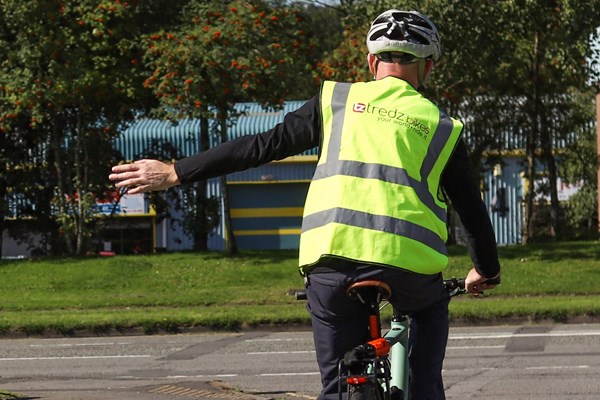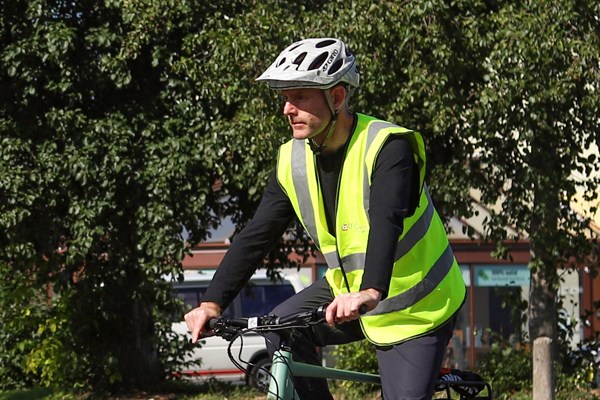At road junctions, the safest way to cycle is to use a systematic routine. This is especially important when turning right as you need to cross two traffic lanes. The crucial things to consider are looking all around you, communicating your intentions to other road users, choosing a suitable road position and knowing who goes first at the junction.
To help you become a smarter cyclist we’ve broken up this turning right manoeuvre into clear steps. Using a routine like this is the best way to ride safely and more responsibly at road junctions.
1Look behind to check it is safe before moving position
Look over your right shoulder to see what’s behind you as you approach the junction. Do this to check that it is safe to move into position. As well as seeing what is behind you, looking over your shoulder will tell other road users that you are about to do something.

2Move into position to emphasise that you are turning right
As you approach the junction move into a position that emphasises you are about to turn right. This position will be similar to the primary position but just a little further to the right. About an arms-length from the centre line is a good position.
 The primary riding position is in the centre of the traffic lane.
The primary riding position is in the centre of the traffic lane.
Adopting a position slightly to the right of the Primary position will highlight your intention to turn right and will prevent following drivers from overtaking when it is unsafe to do so.
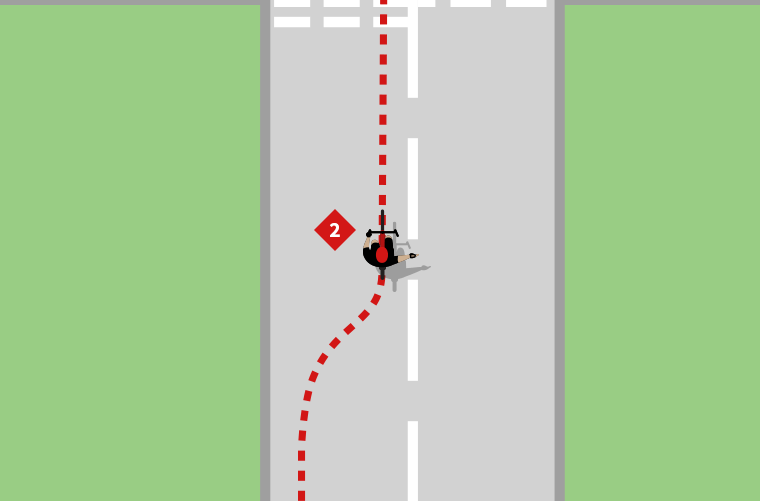
3Signal your intentions to other road users
Signal your intention to turn right once you are cycling in position. Hold your left arm out horizontally for about three seconds. Allow enough time to complete your signal, slow down and stop at the junction if necessary. Continue to look towards the junction and put your hands back on the handlebars before applying the brakes.

4Look both ways and prepare to stop if necessary
As you approach the junction start looking both ways for traffic on the main road. Start doing this as soon as you can, so that you can anticipate whether you will need to stop at the give-way lines.
 Riding slowly towards the junction will give you more time to look properly both ways. Applying the brakes while still pedalling is a good way to ride slowly in a controlled way.
Riding slowly towards the junction will give you more time to look properly both ways. Applying the brakes while still pedalling is a good way to ride slowly in a controlled way.

4aTraffic on the main road goes first
If there is oncoming traffic on the main road, stop at the double dashed give way lines to let them go past. When you stop your front wheel should be level with the give way lines but not over them. Put your left foot on the ground and position your right foot on your pedal with the crank arm in the 10 past 2 position. This will allow you to move off quickly when you need to. Keep your brakes on while you are stopped to prevent you from rolling forward.
Continue as soon as you see that there is a safe space in the traffic coming from each direction to do so.
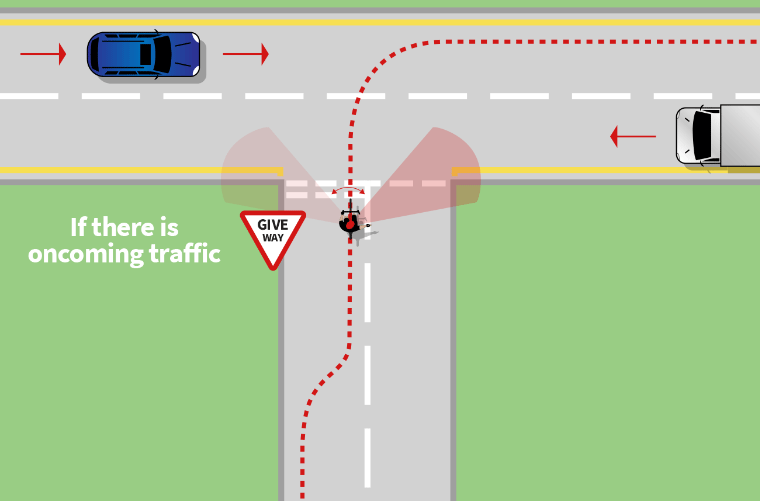
4bIf the road is clear, continue without stopping
If you can see that the road is clear both ways then you can continue without stopping. You can also continue if there is enough room in the traffic - moving from both the right and left - for you to complete the manoeuvre safely.
 If you aren’t sure if there is enough space in the traffic then stop at the give way lines and wait for a bigger space.
If you aren’t sure if there is enough space in the traffic then stop at the give way lines and wait for a bigger space.
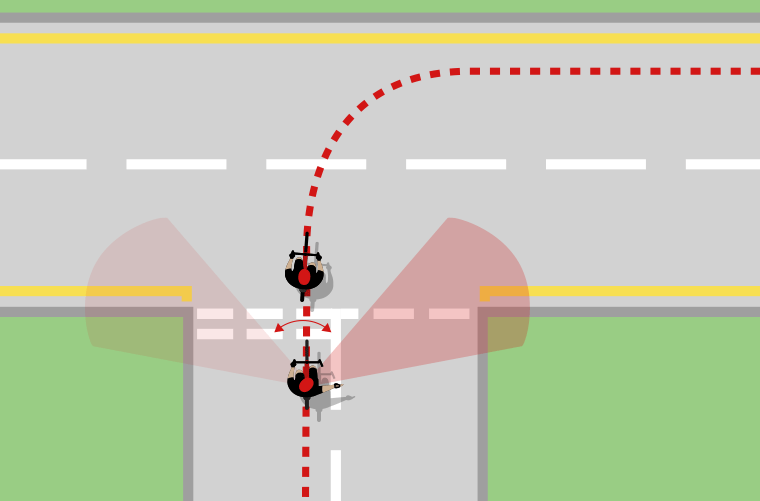
5Ride straight across the first lane and turn once you are over the centre line
It is important that you cross the first traffic lane as quickly as possible as this is the safest way to turn right onto a main road. Ride straight across the first traffic lane rather than cut the corner. Start your turn once you’ve crossed the centre line.
You can move straight into the secondary cycling position when you turn as long as the road ahead is clear.
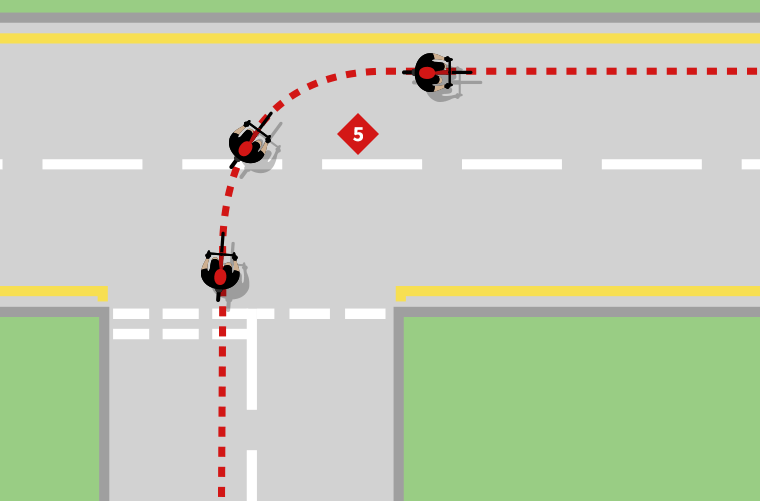
The Manouevre




